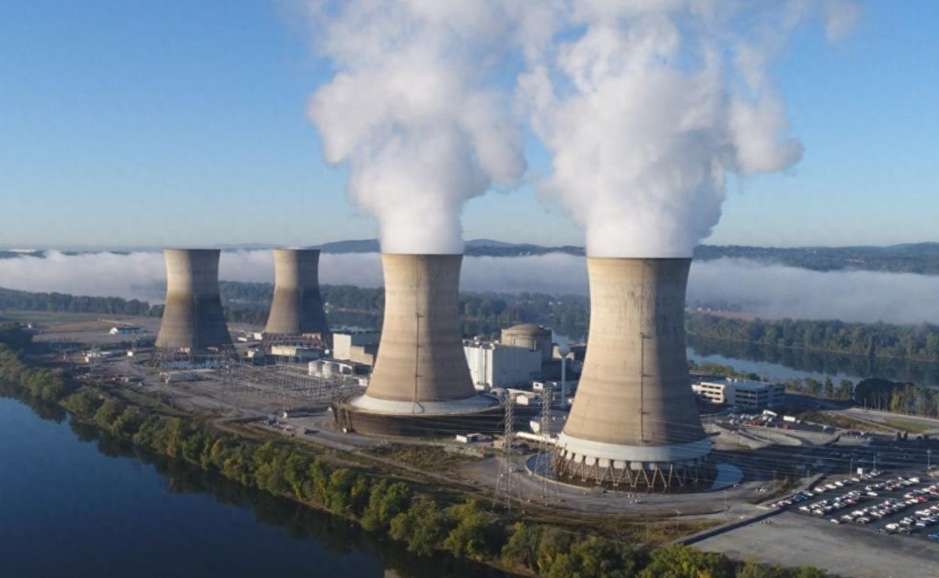Mongolia Invests $1.6B in Uranium Mining
Advertisements
In recent developments, Mongolia has embarked on a significant journey towards bolstering its nuclear power capabilities, with an investment plan that is making headlines around the globeThe nation recently inked an agreement with French company Orano for a lucrative uranium mining project worth approximately $1.6 billionThis ambitious venture reflects Mongolia's aspirations to tap into its rich mineral resources, particularly uranium, which has been a focal point in its pursuit of energy independence and economic growth.
The partnership with Orano is not a mere coincidenceFrance has long been recognized as a leader in nuclear power, boasting the highest number of nuclear reactors in Europe and generating more than 70% of its electricity from nuclear energyOrano, formerly known as Areva, specializes in uranium mining globally, a necessity to fuel France's nuclear power infrastructure
The historical ties between Mongolia and Orano stretch back 25 years, with exploration efforts culminating in the current project's establishment.
From a macroeconomic perspective, an investment of this magnitude holds exceptional significance for Mongolia, whose population barely exceeds 3 millionThe initial $500 million investment, a fraction of the total project cost, amounts to over $100 per capita—a considerable sum for a nation grappling with poverty and seeking pathways to economic stability.
However, the excitement surrounding this investment is tempered by a crucial logistical challenge: transportationMongolia's geography places it centrally between two powerhouse neighbors—Russia to the north and China to the south—making it vulnerable to their influenceThe path for transporting mined uranium to international markets inevitably leads through these two giants, which raises questions about security and operational autonomy.
Mongolia has developed a strategy known as the "Third Neighbor" policy, aiming to leverage relationships with countries beyond its immediate borders to mitigate reliance on China and Russia
- Buffett Ups His Stake!
- The Fed's Path to Resolution in 2025
- This US Stock Soars Over 143%!
- The Bond Market Soars into the New Year
- Deep Divisions in American Interests
This concept posits that nations with favorable relations with Mongolia can be designated as its "third neighbors." It’s a clever diplomatic maneuver, seeking to foster a sense of economic diversification and independence in a landscape dominated by its two larger neighbors.
Yet, the practicality of this strategy is layered with complexityTrade between Mongolia and its neighbors is overwhelmingly dependent on China, which accounts for over 60% of Mongolia's total trade, followed by Russia at 6%. Together, these countries comprise a staggering 66% of Mongolia's trade relationshipsNavigating this reality poses a daunting task for a nation aspiring to carve out its niche on the global stage while reducing its economic dependence on these superpowers.
Mongolia's valuable mineral resources, including coal, copper, and rare earth elements, along with the burgeoning uranium projects, have caught the attention of multiple countries beyond China and Russia
Nations like Germany and India have shown increasing interest; Germany is focusing on copper, while India hopes to tap into Mongolia's coal reserves, which it desperately needs to support its own energy requirements.
Nonetheless, the fundamental question remains: how will Mongolia manage to export its newly mined uranium? While the idea of using Russian routes appears unfeasible due to the current geopolitical tensions following the ongoing conflict in Ukraine, relying entirely on China presents its own set of challengesWith Mongolia now finding itself more dependent on China for its mineral exports, the leverage it hoped to gain through diversification into third-party relationships seems precarious at best.
The crux of the situation requires Mongolia to balance its ambitions against the realities of its geopolitical circumstancesThe fallout from issues such as the Ukraine conflict means that Orano faces substantial hurdles in transporting uranium through Russia, effectively pushing all traffic toward China's logistical networks

Thus, even as Mongolia steps onto the world stage as a potential uranium supplier, its route to market remains precariously situated within China's sphere of influence.
For Mongolia, engaging with third neighboring countries—while a noble pursuit—cannot be seen as a panacea for its reliance on China and RussiaWhile the desire to strengthen ties with nations like France, Germany, and India seems promising, the grim reality is that Mongolia's economic heartbeat remains tied to its strategic neighborsThis poses a double-edged sword; establishing stronger relations with third parties could increase trade volume, inadvertently further entrenching Mongolia's dependence on China to access global markets.
As Mongolia attempts to assert its position, its “Third Neighbor” strategy may ultimately lack the necessary pragmatismOrano's partnership and future uranium projects could indeed transform Mongolia into a significant player in the global nuclear energy landscape; however, the logistics of exporting such resources continue to hinge on navigation through a tightly controlled economic route dominated by its neighbors.
Ultimately, while Mongolia seeks to develop its identity apart from China and Russia, its attempts at asserting foreign relationships may be more symbolic than substantive
The dream of achieving a diversified economic outreach rests on capabilities that are, for now, heavily influenced by the realities of its geographical constraintsThus, even in a world where Mongolia yearns for independence, the echoes of its neighboring giants remain omnipresent, shaping the fate of the landlocked nation.
In conclusion, as Mongolia invests heavily in its uranium resources and envisions a future entrenched in nuclear power, the surrounding geopolitical climate paired with its geographic limitations points to a complex road aheadThe intertwining of aspirations with the practicalities of operational execution suggests that Mongolia's ambitions, while bold, may require more than just enthusiasm to navigate effectivelyThe path to true autonomy and economic diversification remains hindered, caught in the currents of larger powers that continue to exert influence over its destiny.
Post Comment